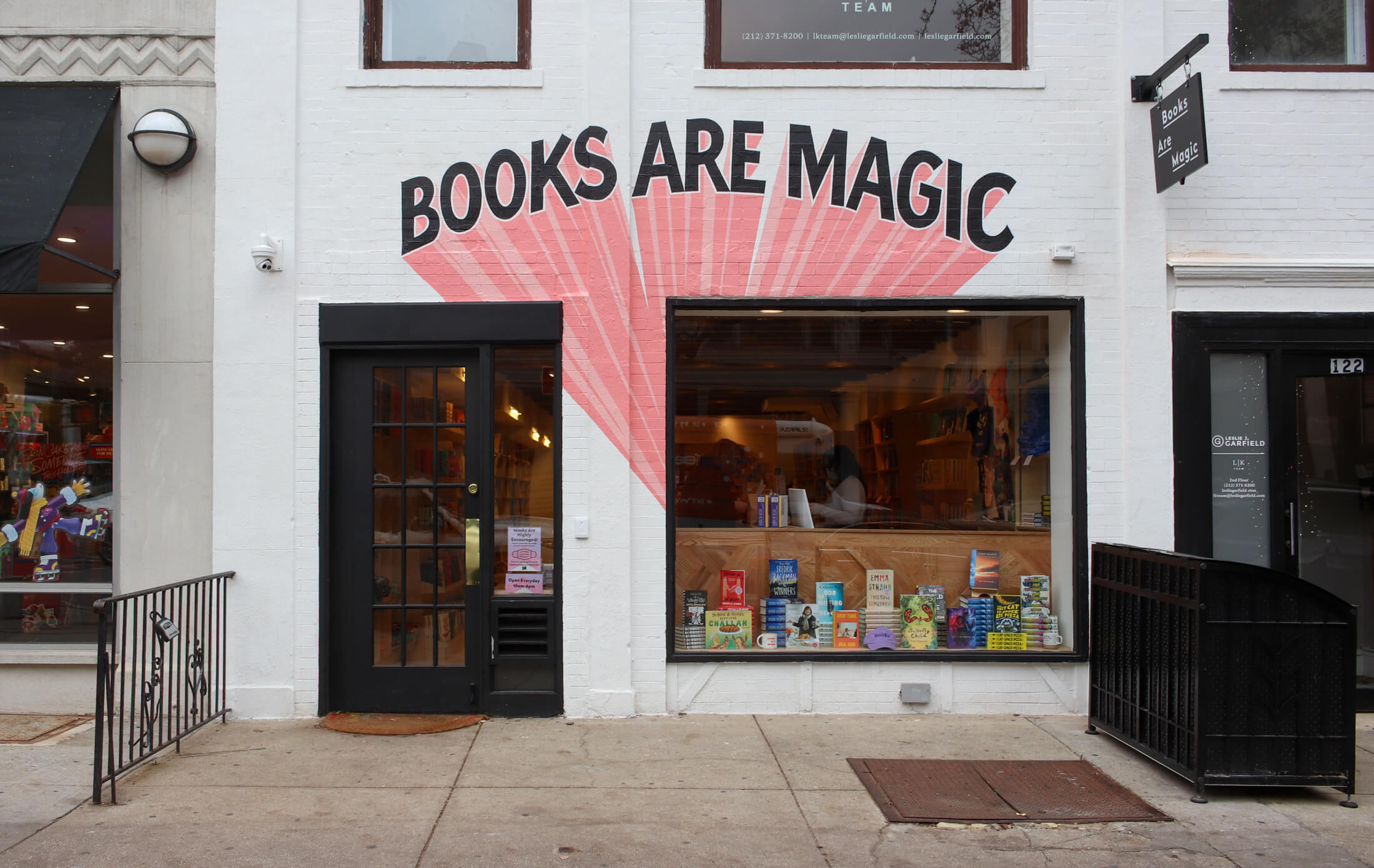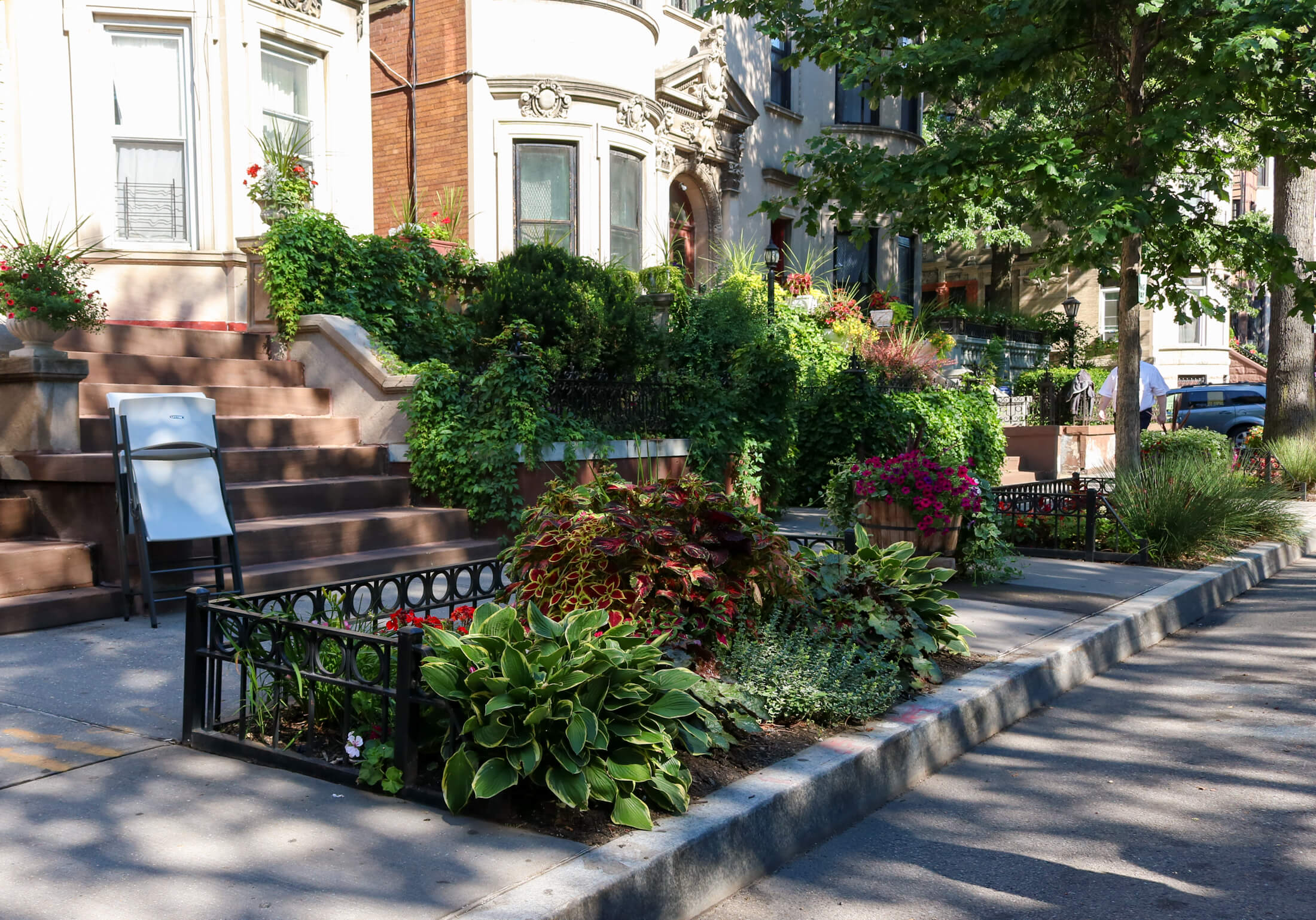LPC Proposes Easing Rules for Solar, Tree Pit Installation, Process for Public to Suggest Rules
The city’s Landmarks Preservation Commission is floating a package of rule changes relating to how it governs storefront signage, sidewalks, solar panels, HVAC, and more.

Fanciful toppers in the Crown Heights North II Historic District in 2018. Photo by Susan De Vries
The city’s Landmarks Preservation Commission is floating a package of rule changes relating to how it governs storefront signage, sidewalks, solar panels, HVAC, and more in an effort to “close gaps” and “make rules more efficient and clear.” The proposed amendments would also include a new pathway for members of the public to petition the agency to introduce new rules they think necessary.
LPC staff presented the suggested rules to commissioners in a meeting Tuesday, where commissioners unanimously voted to calendar the package for a public hearing on May 23. Chair Sarah Carroll said the amendments, which also include changes to expedite Certificates of No Effect, master plans and district master plans, and the Historic Preservation Grant program, follow up on the rule amendments package of 2019.
“This is really after sort of using those rules for a while, we’ve noticed some gaps and additional things that would make the rules more efficient and clear,” Carroll told commissioners. “And we also are responding to newer technologies and making sure that our regulatory work is up to date with that.”
The amendments also tie in with Mayor Eric Adams’ City of Yes and Get Stuff Built plans. The last of Get Stuff Built’s 111 proposals is: “LPC will introduce several new rules to allow for streamlined processing of permits by the end of 2022. Topics include allowing increased flexibility in storefront windows and signs, sidewalk cafes, and solar panel installations, among others.”

LPC staff said the amendments either codify existing practices or modify current rules due to changing codes or rules outside or inside the agency. Changes that stem from inside the agency include delegating to staff review those types of work for which commissioners have established a set of standards and criteria for approval, such as painted wall signs and solar panels.
The amendments are broken into three sections: commercial updates, sustainability and climate resiliency work, and miscellaneous.
Commercial updates include “several amendments and changes to the rules designed to foster and support our local businesses,” LPC Senior Technical Advisor Leanne Pollock told commissioners. Proposals include allowing businesses to use banner signs made of flexible fabric and to apply signage to glazing; allowing dimensional letters to be applied to glass at storefront transoms; expanding where plaque sign installations can occur and their allowed materials and size; explaining that LED neon is permitted for interior signage; and clarifying rules around interior TV and LED screens.
The proposed amendments would also detail what signage types are exempt from permitting, including the replacement of flags at poles that were installed prior to a building’s designation, and swapping vinyl decal or banner signs.
The amendments would also codify rules for painted wall sign master plans. “This change would allow staff to issue these permits if a proposal meets a certain set of criteria, including size, location, use of a border, etc. and there’s also a precedent for painted wall signs at the subject building or within the historic district,” Pollock said.
Sustainability and climate resiliency updates are largely focused around solar panels and sidewalk tree pits, and would “continue to demonstrate the compatibility of historic preservation and sustainability goals by enabling adaptations to historic buildings and sites that reduce carbon emissions and improve energy efficiency and resiliency without compromising their historic integrity,” LPC Director of Preservation Cory Herrala told commissioners.

The updates include expanding staff review of the enlargement or new installment of tree pits, planting beds, and bioswales, and codifying the commission’s routine approvals of solar panels on buildings with sloped roofs. Excluded from the staff review would be buildings with mansard roofs, towers, turrets, and other crowning elements, Herrala said, which would still require a commission-level look.
The amendments would also allow “limited and targeted expansion” of visible installations already reviewed at staff level. “In some cases, solar panels and other HVAC installations are visible through a gap in the street wall but not visible from anywhere else,” Herrala said. “We find that these fleeting views seem in the context of plain secondary facades and often over other utilitarian accretions do not detract from the buildings or the streetscape.”
Mark Silberman, LPC’s general counsel, presented the proposals for miscellaneous updates, which include a new rule that would lay out the process for members of the public to petition LPC for new rules. He said the agency’s chair would review the petition, and either deny it or accept it, bringing it to a calendaring vote.
Other miscellaneous updates include tweaking the process for district master plans; eliminating the need for an owner to submit a sworn statement saying the application complies with the rules (the architect or engineer must still file signed and sealed drawings indicating compliance); and amending the eligibility requirements for the Historic Preservation Grant, clarifying that buildings do not have to be in a census tract that qualifies.
“Rules play an important role in the agency’s mission to protect the city’s historic buildings and sites by ensuring our regulation is as efficient as possible and in our equity framework as well by promoting transparency into the regulatory process,” Silberman said. He said the proposed amendments would promote transparency and predictability in the regulatory process, and would further the agency’s sustainability and climate resiliency goals.
The proposed rule changes have been posted on LPC website, and will also be available on NYC Rule’s website and in the city record. Silberman and Carroll encouraged the public to review the amendments and submit testimony, either before or at the public hearing.
“After the hearing is closed, staff will review the testimony and consider proposed changes, derived both from the public comment as well as any comments from commissioners, and we may modify the proposed rules and bring them back ultimately for a vote,” he said. If the package of amendments is approved, the rules would be effective 30 days after publication in the city record.
Related Stories
- After a Year-Long Debate, Landmarks Preservation Commission Votes in Favor of Rules Changes
- Public Mostly in Favor of Revised LPC Rules Changes, But Think More Work Can Still Be Done
- After Outcry, LPC Alters But Presses Forward With Controversial Plan to Change Preservation Rules
Email tips@brownstoner.com with further comments, questions or tips. Follow Brownstoner on Twitter and Instagram, and like us on Facebook.









What's Your Take? Leave a Comment